珀金斯1506柴油机:配件与维修的深度解析 Perkins 1506 Diesel Engine: In Depth Analysis of Accessories and Maintenance
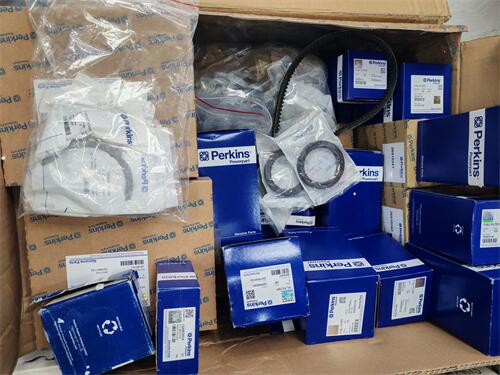
珀金斯1506柴油机:工业动力心脏
在工业领域,珀金斯1506柴油机堪称一颗强劲的“动力心脏”,为众多机械设备提供稳定而可靠的动力支持。从工程机械到发电机组,从船舶动力到工业设备,珀金斯1506柴油机凭借其卓越的性能、高效的动力输出以及出色的可靠性,在全球范围内得到了广泛应用。
作为一款经典的柴油机型号,珀金斯1506柴油机具备多项技术优势。它采用先进的燃油喷射系统,能够实现精确的燃油喷射,有效提高燃油利用率,降低油耗和排放。涡轮增压技术的应用,则进一步提升了柴油机的动力性能,使其在各种工况下都能保持稳定的运转。此外,该型号柴油机还具有结构紧凑、体积小、重量轻等特点,便于安装和维护,为设备的高效运行提供了有力保障。
然而,就像任何机械设备一样,珀金斯1506柴油机在长期使用过程中,也难免会出现各种问题。配件的磨损、老化,以及因操作不当、维护不及时等原因导致的故障,都可能影响柴油机的正常运行。因此,了解珀金斯1506柴油机的配件知识和掌握专业的维修技术支持,对于保障设备的稳定运行、延长设备使用寿命来说,至关重要。接下来,就让我们深入探讨一下珀金斯1506柴油机配件的相关知识以及维修技术支持的要点。
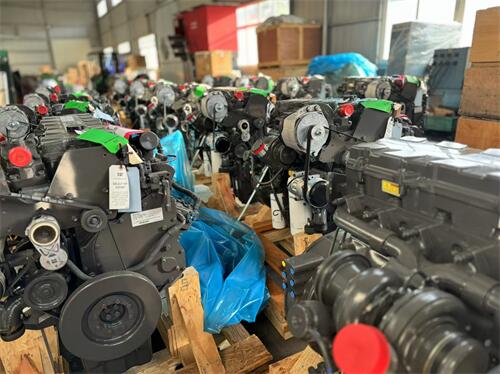
核心配件大揭秘
(一)关键配件一览
涡轮增压器:作为珀金斯1506柴油机的重要配件,涡轮增压器就像是发动机的“动力助推器”。它利用柴油机排出的废气能量,驱动涡轮旋转,进而带动压气机对进气进行压缩,使更多的空气进入气缸,实现更充分的燃烧,从而显著提高柴油机的功率和扭矩。在实际应用中,比如在一些大型工程机械中,配备了涡轮增压器的珀金斯1506柴油机能够轻松应对重载作业,高效完成挖掘、装载等任务。一旦涡轮增压器出现故障,如增压压力不足,会导致柴油机动力明显下降,油耗增加,无法满足设备的工作需求。
滤清器:滤清器包括空气滤清器、机油滤清器和燃油滤清器,它们如同柴油机的“卫士”,分别负责过滤空气中的杂质、机油中的污染物以及燃油中的杂质和水分。以空气滤清器为例,它能有效防止灰尘、沙粒等进入气缸,避免气缸、活塞等部件的过度磨损。在沙尘较大的施工环境中,空气滤清器的作用尤为重要,若其过滤效果不佳,大量沙尘进入气缸,会加速气缸壁的磨损,缩短柴油机的使用寿命。机油滤清器则能保证机油的清洁,维持良好的润滑性能,减少各运动部件之间的摩擦和磨损。燃油滤清器能去除燃油中的杂质和水分,防止喷油嘴堵塞,确保燃油的正常喷射和燃烧,对柴油机的性能和稳定性起着关键作用。
活塞:活塞是柴油机工作循环的关键部件,它在气缸内做往复运动,通过连杆将动力传递给曲轴,实现热能到机械能的转换。活塞需要承受高温、高压和高速的交变载荷,因此对其材料和制造工艺要求极高。优质的活塞具有良好的耐磨性、耐热性和强度,能够保证柴油机的高效运行。如果活塞出现磨损、拉伤或变形等问题,会导致气缸漏气,柴油机功率下降,启动困难,甚至可能引发严重的机械故障。
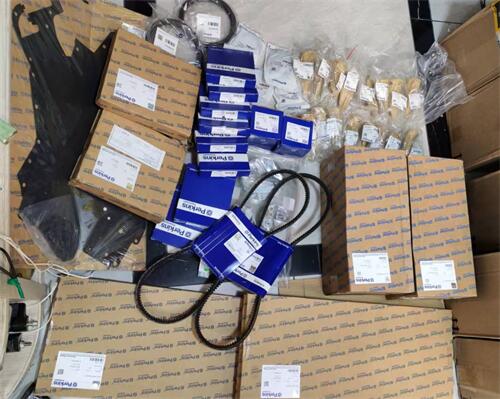
(二)配件适配要点
型号匹配:选择珀金斯1506柴油机配件时,首先要确保型号完全匹配。不同型号的柴油机,其配件的规格、尺寸、性能参数等都可能存在差异。例如,涡轮增压器的型号必须与柴油机的型号和功率相适配,否则可能无法正常工作,甚至会对柴油机造成损坏。在购买配件时,一定要仔细核对设备的型号、出厂编号等信息,参考珀金斯官方的配件目录或咨询专业的技术人员,确保所选配件与柴油机精准匹配。
质量辨别:市场上的珀金斯柴油机配件质量参差不齐,为了避免使用劣质配件,需要掌握一些质量辨别方法。可以从配件的外观、包装、标识等方面进行初步判断。正品配件通常外观做工精细,表面光滑,没有明显的瑕疵、毛刺或砂眼;包装规范,印刷清晰,有完整的品牌标识、产品型号、生产厂家等信息;标识清晰准确,与配件的实际参数相符。还可以通过检查配件的材质、重量等进一步判断其质量。对于一些关键配件,如涡轮增压器、活塞等,建议选择珀金斯原厂配件或经过授权的正规渠道供应的配件,虽然价格可能相对较高,但质量和性能更有保障。同时,要注意查看配件的质量认证证书、检验报告等,确保其符合相关标准和要求。
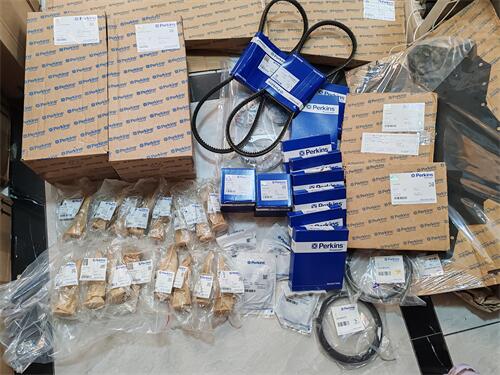
常见故障与维修秘籍
(一)动力不足排查
当珀金斯1506柴油机出现动力不足的情况时,需要全面排查可能的原因。涡轮增压器故障是常见因素之一,如涡轮增压器内部的叶轮损坏、轴承磨损等,会导致增压压力不足,使进入气缸的空气量减少,从而影响燃烧效率,降低柴油机的动力。此时,可通过检查涡轮增压器的增压压力来判断其是否正常工作,若压力低于标准值,应及时对涡轮增压器进行检修或更换。中冷器过脏也会影响柴油机的动力。中冷器的作用是降低增压后的空气温度,提高空气密度,若其内部积聚了大量污垢,会导致散热效果变差,空气温度过高,密度降低,进而影响燃烧效果,使动力下降。因此,需要定期对中冷器进行清洗,确保其散热性能良好。燃油系统问题同样不容忽视,喷油嘴堵塞、喷油泵故障等,都可能导致燃油喷射不均匀或不足,使燃烧不充分,柴油机动力减弱。遇到这种情况,可对喷油嘴进行清洗或更换,检查喷油泵的工作状态,必要时进行调校或维修。
(二)漏油问题处理
在珀金斯1506柴油机的使用过程中,漏油问题较为常见,机油、燃油等的泄漏不仅会造成资源浪费,还可能影响柴油机的正常运行,甚至引发安全隐患。对于机油漏油,常见的原因是密封件老化、磨损或损坏。例如,曲轴油封、气门油封等密封件在长期使用后,会逐渐失去弹性,导致密封性能下降,从而出现机油泄漏。此时,需要及时更换相应的密封件,确保密封效果。在更换密封件时,要选择质量可靠的配件,并严格按照安装要求进行操作,避免因安装不当导致再次漏油。油管破裂也是导致漏油的原因之一,油管在长期受到振动、腐蚀等作用下,可能会出现破裂。一旦发现油管破裂,应立即更换新的油管,并检查油管的固定情况,确保其安装牢固,避免因振动而再次损坏。对于燃油漏油,除了密封件和油管问题外,还可能是喷油器安装不当或损坏导致的。如果喷油器与气缸盖之间的密封不良,会造成燃油泄漏。此时,需要重新安装喷油器,确保密封垫完好无损,安装紧固。若喷油器本身损坏,如喷油嘴磨损、针阀卡死等,也会导致燃油泄漏,应及时对喷油器进行检修或更换。
(三)启动困难解决
启动困难是珀金斯1506柴油机可能出现的又一故障。电瓶电量不足是常见原因之一,长时间使用或充电系统故障可能导致电瓶电量下降,无法提供足够的电能来启动柴油机。遇到这种情况,可使用万用表测量电瓶电压,若电压低于正常范围,应及时对电瓶进行充电或更换。启动马达故障也会导致启动困难,如启动马达内部的电刷磨损、电磁开关故障等,会使启动马达无法正常工作。此时,需要对启动马达进行检修或更换。喷油系统故障同样会影响柴油机的启动,喷油嘴堵塞、喷油压力不足等,会导致燃油无法正常喷射到气缸内,使柴油机难以启动。针对喷油系统故障,可对喷油嘴进行清洗和调试,检查喷油泵的工作状态,确保喷油压力符合要求。另外,进气系统不畅也可能导致启动困难,空气滤清器堵塞会使进入气缸的空气量减少,影响混合气的形成,从而导致启动困难。因此,要定期检查和更换空气滤清器,确保进气畅通。

维修技术实操指南
(一)维修工具准备
“工欲善其事,必先利其器”,维修珀金斯1506柴油机,一套齐全且合适的工具是必不可少的。首先,各类扳手是基础且关键的工具,包括梅花扳手、开口扳手、套筒扳手等,它们规格多样,用于拆卸和安装各种螺栓、螺母。比如在拆卸柴油机的气缸盖时,就需要用到合适尺寸的套筒扳手,以确保能够顺利拧下紧固螺栓,且不会对螺栓造成损伤。扭力扳手也是不可或缺的,它能精确控制螺栓的拧紧力矩,保证各部件的安装符合规定的扭矩要求,避免因扭矩过大或过小导致的各种问题,像气缸垫密封不严、零部件松动等。
螺丝刀分为一字螺丝刀和十字螺丝刀,用于拆卸和安装各种螺丝,比如在拆卸柴油机的电器部件外壳、滤清器外壳等时,就会用到它们。在选择螺丝刀时,要注意其刀头的尺寸和形状与螺丝相匹配,避免出现滑丝现象。
万用表则是检测电路故障的重要工具,通过它可以测量电压、电流、电阻等参数,判断电器元件是否正常工作。例如,在排查启动困难故障时,可用万用表检测电瓶的电压,判断电瓶电量是否充足;也可检测启动马达的电阻,判断其是否存在短路或断路等故障。
此外,还需要一些专用工具,如柴油喷油嘴拉马,用于拆卸喷油嘴,能更方便、安全地将喷油嘴从气缸盖上取下,避免对喷油嘴和气缸盖造成损坏。活塞环安装工具则用于安装活塞环,确保活塞环能够正确地安装在活塞上,保证活塞与气缸壁之间的密封性能。这些专用工具在维修过程中起着关键作用,能提高维修效率和质量。

(二)维修流程规范
故障诊断:这是维修的第一步,也是关键环节。维修人员需要通过观察、倾听、触摸等方式,对柴油机的故障现象进行全面了解。比如,观察柴油机的排烟颜色,如果排烟呈黑色,可能是燃油燃烧不充分,原因可能是空气滤清器堵塞、喷油过多等;如果排烟呈白色,可能是有水进入气缸,可能是气缸垫损坏、缸套破裂等。倾听柴油机运行时的声音,异常的敲击声、摩擦声等都可能暗示着不同的故障,如敲缸声可能是活塞与气缸壁间隙过大、气门间隙过大等原因导致。还可以使用专业的诊断设备,如故障诊断仪,读取柴油机的故障码,进一步确定故障的具体部位和原因。在诊断过程中,要仔细分析各种可能的因素,避免误诊。
制定维修方案:在确定故障原因后,根据具体情况制定详细的维修方案。如果是涡轮增压器故障,需要确定是更换整个涡轮增压器,还是只更换损坏的零部件,如叶轮、轴承等;如果是活塞磨损,要考虑更换活塞的型号、材质等。同时,要准备好所需的维修工具和配件,确保维修工作能够顺利进行。
拆卸与维修:按照正确的顺序和方法对柴油机进行拆卸。在拆卸过程中,要注意做好标记,记录各部件的安装位置和方向,避免在安装时出现错误。对于一些关键部件,如曲轴、连杆等,要小心操作,防止碰撞和损坏。在维修过程中,要严格按照维修手册的要求进行操作,确保维修质量。比如,在更换活塞环时,要注意活塞环的开口间隙、侧隙等参数,使其符合规定要求;在安装气缸垫时,要确保气缸垫的安装方向正确,且拧紧螺栓时要按照规定的扭矩和顺序进行,防止气缸垫密封不严。
安装与调试:维修完成后,按照拆卸的相反顺序进行安装。在安装过程中,要再次检查各部件的安装位置和连接情况,确保无误。安装完成后,对柴油机进行调试。首先,检查柴油机的油、水、气等系统是否正常,如机油液位是否在正常范围内、冷却液是否充足、进气和排气系统是否畅通等。然后,启动柴油机,观察其启动是否顺利,运转是否平稳,有无异常声音和振动。检查柴油机的各项性能指标,如转速、功率、油耗、排放等,是否符合要求。如果发现问题,要及时进行调整和修复。
安全注意事项:在整个维修过程中,安全始终是第一位的。维修前,必须关闭柴油机,并等待其冷却后再进行操作,避免烫伤。维修人员要佩戴好防护手套、护目镜、安全帽等个人防护装备,防止受伤。在使用工具时,要正确操作,避免工具滑落伤人。在拆卸和安装大型部件时,要使用合适的吊装设备,并确保吊装设备的安全可靠,防止部件掉落造成事故。同时,要注意维修现场的通风,避免吸入有害气体。
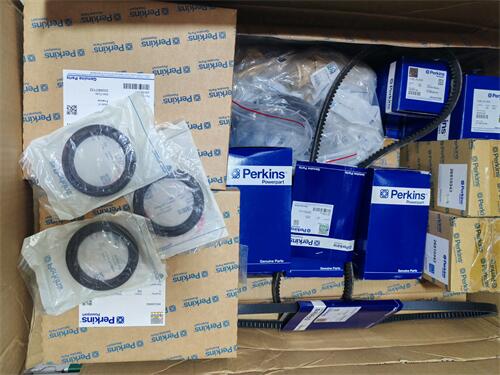
日常保养小贴士
(一)保养周期设定
珀金斯1506柴油机的保养周期并非一成不变,它受到多种因素的综合影响。一般情况下,当柴油机累计运行时长达到300小时左右,或者使用时间达到6个月,就需要进行一次全面保养。但如果柴油机长期处于恶劣的工作环境中,如高温、高湿、粉尘多的工地,或者在寒冷地区频繁启停作业,保养周期则应适当缩短。在高温高湿环境下,金属部件更容易生锈腐蚀,润滑油的性能也会更快下降,此时建议将保养周期缩短至200小时或者3个月,以便及时发现和解决潜在问题,确保柴油机的正常运行。若柴油机运行环境较为良好,负荷稳定,运行时长和时间间隔可适当延长,但也不宜超过建议周期过多,以免因保养不及时导致故障发生。
(二)保养项目详解
机油更换:机油就如同柴油机的“血液”,对其正常运转起着至关重要的作用。在更换机油时,首先要选择符合珀金斯1506柴油机要求的机油型号,一般可参考设备的使用手册。将柴油机停放在平坦的地面上,待其冷却后,找到油底壳上的放油螺栓,使用合适的扳手缓慢拧下,将旧机油排放到专门的容器中。排放完毕后,用干净的布擦拭放油螺栓和油底壳接口处,确保无杂质残留,然后安装回放油螺栓并拧紧。接着,打开机油加注口,使用漏斗缓慢加入新机油,添加过程中要注意观察机油尺,使机油液位保持在机油尺的上下限刻度之间,避免机油过多或过少。添加完成后,盖好机油加注口盖子。
滤清器清洁或更换:
空气滤清器:空气滤清器能有效过滤进入柴油机的空气,防止灰尘、杂质等进入气缸,从而保护发动机内部部件。建议每150小时左右检查一次空气滤清器。如果是纸质滤芯,可使用压缩空气从滤芯内部向外吹,将附着在滤芯表面的灰尘吹掉,但要注意压缩空气的压力不宜过高,以免损坏滤芯;若滤芯过脏或破损,应及时更换新的滤芯。在沙尘较大的环境中作业时,检查和更换的频率应相应增加。
机油滤清器:机油滤清器用于过滤机油中的杂质,保证机油的清洁度。在更换机油时,通常也需要同时更换机油滤清器。先使用专用的滤清器扳手拧下旧的滤清器,注意在拧下过程中避免滤清器内的脏机油洒落。安装新滤清器前,在滤清器的密封胶圈上涂抹一层薄薄的机油,以保证密封效果,然后用手将滤清器拧紧,再用滤清器扳手适当拧紧即可。
燃油滤清器:燃油滤清器的作用是过滤燃油中的杂质和水分,防止喷油系统堵塞。一般每300小时或6个月更换一次燃油滤清器。更换时,先关闭燃油管路的阀门,然后拧下滤清器外壳,取出旧滤芯,清洁滤清器外壳内部,再安装上新滤芯,最后拧紧滤清器外壳,并打开燃油管路阀门。同时,要定期检查燃油滤清器是否有漏油现象,确保其正常工作。
冷却液检查:冷却液对于柴油机的散热至关重要,它能保证柴油机在适宜的温度范围内运行。每隔300小时或6个月,需要检查一次冷却液的液位和浓度。冷却液液位应在膨胀水箱的上下限刻度之间,如果液位过低,应添加符合要求的冷却液,注意不要添加自来水,以免产生水垢影响散热效果。同时,使用专用的冷却液浓度测试仪检查冷却液的浓度,确保其符合设备要求,不同地区和季节对冷却液浓度的要求可能有所不同,一般在寒冷地区需要更高的浓度以防止冷却液结冰。如果冷却液的浓度不符合要求,应及时调整或更换冷却液。此外,还要检查冷却液管路是否有泄漏、老化等情况,如有问题应及时修复或更换管路。
部件紧固:随着柴油机的运行,各部件的连接螺栓、螺母等可能会出现松动现象,这不仅会影响柴油机的正常工作,还可能导致部件损坏。因此,每次保养时都要对柴油机的关键部件进行紧固检查。使用合适的扳手,按照规定的扭矩值对气缸盖螺栓、连杆螺栓、飞轮螺栓等进行紧固。在紧固过程中,要注意按照正确的顺序进行操作,避免因顺序不当导致部件受力不均。同时,检查各管路、支架等的固定情况,确保其牢固可靠。例如,对于进气管路和排气管路的连接部位,要检查其卡箍是否紧固,防止出现漏气现象;对于柴油机的支架,要检查其与设备底座的连接螺栓是否松动,确保柴油机在运行过程中稳定可靠。
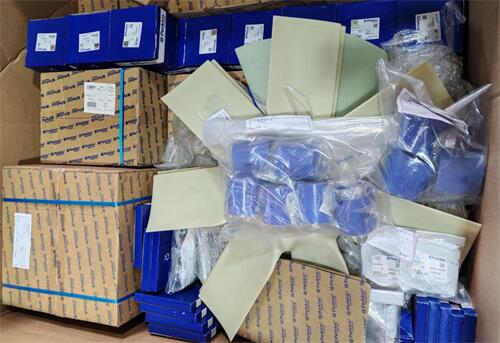
总结与展望
珀金斯1506柴油机作为众多工业设备的动力源泉,其性能的稳定发挥直接关系到设备的运行效率和生产效益。在日常使用中,选择适配的高质量配件是确保柴油机正常运行的基础,它们就如同精密仪器中的精准零件,每一个都起着不可或缺的作用。而掌握专业的维修技术和严格遵循维修流程,则是解决柴油机故障、恢复其性能的关键,这需要维修人员具备扎实的专业知识和丰富的实践经验。同时,定期进行全面且细致的保养,能够有效预防故障的发生,延长柴油机的使用寿命,使其始终保持在最佳工作状态。
希望各位读者在实际使用珀金斯1506柴油机时,能够高度重视配件的选择、维修技术的运用以及日常保养工作。只有这样,才能充分发挥珀金斯1506柴油机的强大性能,为您的生产和工作提供可靠的动力支持。如果在使用过程中遇到任何问题,欢迎随时与我交流探讨,让我们一起为珀金斯1506柴油机的稳定运行保驾护航。
Perkins 1506 diesel engine: the heart of industrial power
In the industrial field, the Perkins 1506 diesel engine can be regarded as a powerful "power heart", providing stable and reliable power support for numerous mechanical equipment. From construction machinery to generator sets, from ship power to industrial equipment, the Perkins 1506 diesel engine has been widely used worldwide due to its excellent performance, efficient power output, and outstanding reliability.
As a classic diesel engine model, the Perkins 1506 diesel engine has multiple technological advantages. It adopts an advanced fuel injection system, which can achieve precise fuel injection, effectively improve fuel utilization, reduce fuel consumption and emissions. The application of turbocharging technology further enhances the power performance of diesel engines, enabling them to maintain stable operation under various working conditions. In addition, this model of diesel engine also has the characteristics of compact structure, small volume, and light weight, which is easy to install and maintain, providing strong guarantee for the efficient operation of the equipment.
However, like any mechanical equipment, the Perkins 1506 diesel engine is inevitably prone to various problems during long-term use. The wear and aging of accessories, as well as malfunctions caused by improper operation and untimely maintenance, may all affect the normal operation of diesel engines. Therefore, understanding the spare parts knowledge of Perkins 1506 diesel engine and mastering professional maintenance technical support are crucial for ensuring the stable operation of the equipment and extending its service life. Next, let's delve into the relevant knowledge of Perkins 1506 diesel engine parts and the key points of maintenance technical support.
Core Accessories Unveiled
(1) List of Key Accessories
Turbocharger: As an important component of the Perkins 1506 diesel engine, the turbocharger is like a "power booster" for the engine. It utilizes the energy of the exhaust gas emitted by the diesel engine to drive the turbine to rotate, which in turn drives the compressor to compress the intake air, allowing more air to enter the cylinder and achieve more complete combustion, thereby significantly improving the power and torque of the diesel engine. In practical applications, such as in some large construction machinery, the Perkins 1506 diesel engine equipped with a turbocharger can easily handle heavy-duty operations and efficiently complete tasks such as excavation and loading. Once the turbocharger malfunctions, such as insufficient boost pressure, it will lead to a significant decrease in diesel engine power and an increase in fuel consumption, which cannot meet the working requirements of the equipment.
Filters: Filters include air filters, oil filters, and fuel filters, which act as the "guardians" of diesel engines, respectively responsible for filtering impurities in the air, pollutants in the oil, and impurities and moisture in the fuel. Taking air filters as an example, they can effectively prevent dust, sand, and other particles from entering the cylinder, avoiding excessive wear of components such as cylinders and pistons. In construction environments with heavy dust, the role of air filters is particularly important. If their filtering effect is poor, a large amount of dust will enter the cylinder, accelerating the wear of the cylinder wall and shortening the service life of the diesel engine. The oil filter can ensure the cleanliness of the oil, maintain good lubrication performance, and reduce friction and wear between various moving parts. The fuel filter can remove impurities and moisture from the fuel, prevent nozzle blockage, ensure normal fuel injection and combustion, and play a key role in the performance and stability of diesel engines.
Piston: The piston is a key component of the diesel engine working cycle, which performs reciprocating motion in the cylinder and transmits power to the crankshaft through the connecting rod, achieving the conversion of thermal energy to mechanical energy. Pistons need to withstand alternating loads of high temperature, high pressure, and high speed, so their material and manufacturing process requirements are extremely high. High quality pistons have good wear resistance, heat resistance, and strength, which can ensure the efficient operation of diesel engines. If the piston experiences wear, tear, or deformation, it can cause cylinder leakage, decrease in diesel engine power, difficulty starting, and even lead to serious mechanical failures.
(2) Key points for accessory adaptation
Model matching: When selecting Perkins 1506 diesel engine accessories, the first thing to ensure is that the model is completely matched. Different models of diesel engines may have differences in specifications, dimensions, and performance parameters of their accessories. For example, the model of the turbocharger must be compatible with the model and power of the diesel engine, otherwise it may not function properly and may even cause damage to the diesel engine. When purchasing accessories, be sure to carefully check the model, factory number, and other information of the equipment, refer to Perkins' official accessory catalog or consult professional technicians to ensure that the selected accessories are accurately matched with the diesel engine.
Quality identification: The quality of Perkins diesel engine parts on the market varies greatly. In order to avoid using inferior parts, it is necessary to master some quality identification methods. A preliminary judgment can be made from the appearance, packaging, labeling, and other aspects of the accessories. Authentic accessories usually have a finely crafted appearance, smooth surface, and no obvious flaws, burrs, or sand holes; Packaging standards, clear printing, complete brand identification, product model, manufacturer and other information; The identification is clear and accurate, consistent with the actual parameters of the accessories. It is also possible to further determine the quality of the accessories by checking their material, weight, etc. For some key components, such as turbochargers, pistons, etc., it is recommended to choose Perkins original parts or authorized formal channels to supply accessories. Although the price may be relatively high, the quality and performance are more guaranteed. At the same time, pay attention to checking the quality certification certificate, inspection report, etc. of the accessories to ensure that they comply with relevant standards and requirements.
Common faults and repair tips
(1) Troubleshooting of insufficient power
When the Perkins 1506 diesel engine experiences insufficient power, it is necessary to thoroughly investigate the possible causes. Turbocharger failure is one of the common factors, such as damaged impellers and worn bearings inside the turbocharger, which can lead to insufficient boost pressure and reduce the amount of air entering the cylinder, thereby affecting combustion efficiency and reducing the power of the diesel engine. At this point, the normal operation of the turbocharger can be determined by checking its boost pressure. If the pressure is lower than the standard value, the turbocharger should be repaired or replaced in a timely manner. Dirty intercoolers can also affect the power of diesel engines. The function of the intercooler is to reduce the temperature of the pressurized air and increase the air density. If a large amount of dirt accumulates inside, it will cause the heat dissipation effect to deteriorate, the air temperature to be too high, the density to decrease, and then affect the combustion effect, resulting in a decrease in power. Therefore, it is necessary to regularly clean the intercooler to ensure its good heat dissipation performance. Fuel system issues cannot be ignored, such as clogged fuel injectors and malfunctioning fuel injection pumps, which can lead to uneven or insufficient fuel injection, resulting in incomplete combustion and reduced diesel engine power. In this situation, the fuel injector can be cleaned or replaced, the working status of the fuel injection pump can be checked, and if necessary, calibration or maintenance can be carried out.
(2) Oil leakage problem handling
During the use of the Perkins 1506 diesel engine, oil leakage is a common issue. Leakage of engine oil, fuel, etc. not only causes resource waste, but may also affect the normal operation of the diesel engine and even pose safety hazards. The common causes of oil leakage are aging, wear, or damage to seals. For example, seals such as crankshaft oil seals and valve oil seals will gradually lose their elasticity after long-term use, leading to a decrease in sealing performance and resulting in oil leakage. At this point, it is necessary to replace the corresponding seals in a timely manner to ensure the sealing effect. When replacing seals, it is necessary to choose reliable accessories and strictly follow the installation requirements to avoid further oil leakage caused by improper installation. Oil pipe rupture is also one of the causes of oil leakage. Oil pipes may rupture under long-term vibration, corrosion, and other effects. Once the oil pipe is found to be broken, a new oil pipe should be replaced immediately, and the fixing of the oil pipe should be checked to ensure that it is installed firmly and avoid further damage due to vibration. For fuel leakage, in addition to sealing and fuel pipe issues, it may also be caused by improper installation or damage of fuel injectors. If the seal between the fuel injector and the cylinder head is poor, it can cause fuel leakage. At this point, it is necessary to reinstall the fuel injector to ensure that the sealing gasket is intact and securely installed. If the fuel injector itself is damaged, such as nozzle wear, needle valve jamming, etc., it can also cause fuel leakage, and the fuel injector should be inspected or replaced in a timely manner.
(3) Difficulty solving startup
Difficulty starting is another possible malfunction of the Perkins 1506 diesel engine. Insufficient battery power is one of the common reasons. Long term use or charging system failure may lead to a decrease in battery power, which cannot provide enough electricity to start the diesel engine. In this situation, a multimeter can be used to measure the battery voltage. If the voltage is below the normal range, the battery should be charged or replaced in a timely manner. Starting motor failure can also lead to difficulty in starting, such as worn electric brushes inside the starting motor, electromagnetic switch failure, etc., which can prevent the starting motor from working properly. At this point, it is necessary to inspect or replace the starter motor. Malfunctions in the fuel injection system can also affect the starting of diesel engines, such as clogged fuel injectors and insufficient injection pressure, which can prevent fuel from being injected into the cylinder properly and make it difficult to start the diesel engine. For fuel injection system faults, the fuel injectors can be cleaned and debugged, and the working status of the fuel injection pump can be checked to ensure that the fuel injection pressure meets the requirements. In addition, poor intake system may also lead to difficulty in starting. A clogged air filter can reduce the amount of air entering the cylinder, affecting the formation of the mixture and causing difficulty in starting. Therefore, it is necessary to regularly check and replace the air filter to ensure smooth air intake.
Practical Guide to Maintenance Technology
(1) Preparation of maintenance tools
To do a good job, one must first sharpen their tools. A complete and suitable set of tools is essential for repairing the Perkins 1506 diesel engine. Firstly, various types of wrenches are fundamental and critical tools, including ring wrenches, open-end wrenches, socket wrenches, etc. They come in various specifications and are used for disassembling and installing various bolts and nuts. For example, when disassembling the cylinder head of a diesel engine, a socket wrench of appropriate size is needed to ensure that the fastening bolts can be smoothly unscrewed without causing damage to the bolts. A torque wrench is also indispensable as it can precisely control the tightening torque of bolts, ensuring that the installation of various components meets the specified torque requirements and avoiding various problems caused by excessive or insufficient torque, such as poor sealing of cylinder gaskets and loose components.
Screwdrivers are divided into flathead screwdrivers and Phillips screwdrivers, used for disassembling and installing various screws, such as when disassembling electrical component housings, filter housings, etc. of diesel engines. When choosing a screwdriver, it is important to ensure that the size and shape of the blade match the screw to avoid slipping.
A multimeter is an important tool for detecting circuit faults. It can measure parameters such as voltage, current, and resistance to determine whether electrical components are working properly. For example, when troubleshooting startup difficulties, a multimeter can be used to check the voltage of the battery and determine if the battery is fully charged; It can also detect the resistance of the starter motor to determine whether there is a short circuit or open circuit fault.
In addition, some specialized tools are needed, such as diesel fuel injector puller, for disassembling the fuel injector, which can more conveniently and safely remove the fuel injector from the cylinder head, avoiding damage to the fuel injector and cylinder head. The piston ring installation tool is used to install the piston ring, ensuring that the piston ring can be correctly installed on the piston and ensuring the sealing performance between the piston and the cylinder wall. These specialized tools play a crucial role in the maintenance process, improving maintenance efficiency and quality.
(2) Maintenance process specification
Fault diagnosis: This is the first and critical step in maintenance. Maintenance personnel need to have a comprehensive understanding of the fault phenomena of diesel engines through observation, listening, touching, and other methods. For example, observing the exhaust color of a diesel engine, if the exhaust is black, it may be due to insufficient fuel combustion, which could be caused by clogged air filters, excessive fuel injection, etc; If the exhaust is white, it may be due to water entering the cylinder, damage to the cylinder gasket, or rupture of the cylinder liner. Listening to the sound of the diesel engine during operation, abnormal knocking sounds, friction sounds, etc. may indicate different faults. For example, knocking sounds may be caused by excessive clearance between the piston and cylinder wall, excessive valve clearance, and other reasons. Professional diagnostic equipment, such as a fault diagnosis device, can also be used to read the fault codes of the diesel engine and further determine the specific location and cause of the fault. During the diagnostic process, it is important to carefully analyze various possible factors to avoid misdiagnosis.
Develop maintenance plan: After determining the cause of the malfunction, develop a detailed maintenance plan based on the specific situation. If it is a turbocharger malfunction, it is necessary to determine whether to replace the entire turbocharger or only replace damaged components such as impellers, bearings, etc; If it is piston wear, consider replacing the piston model, material, etc. Meanwhile, it is necessary to prepare the necessary maintenance tools and accessories to ensure the smooth progress of the repair work.
Disassembly and maintenance: Disassemble the diesel engine in the correct order and method. During the disassembly process, attention should be paid to marking and recording the installation position and direction of each component to avoid errors during installation. Be careful when handling key components such as crankshafts, connecting rods, etc., to prevent collisions and damage. During the maintenance process, it is necessary to strictly follow the requirements of the maintenance manual to ensure the quality of the repair. For example, when replacing the piston ring, attention should be paid to the opening clearance, side clearance and other parameters of the piston ring to meet the specified requirements; When installing the cylinder gasket, ensure that the installation direction of the cylinder gasket is correct, and tighten the bolts according to the specified torque and sequence to prevent the cylinder gasket from being poorly sealed.
Installation and debugging: After the repair is completed, install in the reverse order of disassembly. During the installation process, it is necessary to recheck the installation position and connection of each component to ensure accuracy. After installation, debug the diesel engine. Firstly, check whether the oil, water, gas and other systems of the diesel engine are normal, such as whether the oil level is within the normal range, whether the coolant is sufficient, and whether the intake and exhaust systems are unobstructed. Then, start the diesel engine and observe if it starts smoothly, runs smoothly, and if there are any abnormal sounds or vibrations. Check whether the various performance indicators of the diesel engine, such as speed, power, fuel consumption, emissions, etc., meet the requirements. If any problems are found, they should be adjusted and repaired in a timely manner.
Safety precautions: Throughout the entire repair process, safety always comes first. Before maintenance, the diesel engine must be turned off and allowed to cool down before operation to avoid burns. Maintenance personnel should wear personal protective equipment such as protective gloves, goggles, and helmets to prevent injury. When using tools, it is important to operate them correctly to avoid slipping and injuring people. When disassembling and installing large components, appropriate lifting equipment should be used and the safety and reliability of the lifting equipment should be ensured to prevent accidents caused by component drops. At the same time, attention should be paid to ventilation at the maintenance site to avoid inhaling harmful gases.
Daily maintenance tips
(1) Maintenance cycle setting
The maintenance cycle of Perkins 1506 diesel engine is not fixed and is influenced by various factors. In general, when a diesel engine has been running for about 300 hours or has been in use for 6 months, a comprehensive maintenance is required. But if the diesel engine is exposed to harsh working conditions for a long time, such as high temperature, high humidity, and dusty construction sites, or frequent start stop operations in cold regions, the maintenance cycle should be appropriately shortened. In high temperature and high humidity environments, metal parts are more prone to rusting and corrosion, and the performance of lubricating oil will deteriorate faster. At this time, it is recommended to shorten the maintenance cycle to 200 hours or 3 months in order to timely detect and solve potential problems and ensure the normal operation of diesel engines. If the operating environment of the diesel engine is relatively good, the load is stable, and the operating time and time interval can be appropriately extended, but it should not exceed the recommended cycle too much to avoid faults caused by untimely maintenance.
(2) Detailed explanation of maintenance items
Oil change: Oil is like the "blood" of a diesel engine, playing a crucial role in its normal operation. When changing the engine oil, the first step is to choose an oil model that meets the requirements of the Perkins 1506 diesel engine, which can generally be referred to in the equipment manual. Park the diesel engine on a flat surface, wait for it to cool down, find the oil drain bolt on the oil pan, slowly unscrew it with a suitable wrench, and drain the old engine oil into a specialized container. After the discharge is completed, wipe the oil drain bolt and oil pan interface with a clean cloth to ensure that there are no impurities left, then install the oil drain bolt and tighten it. Next, open the oil filling port and slowly add new oil using a funnel. During the addition process, pay attention to observing the oil dipstick to keep the oil level between the upper and lower limits of the dipstick, avoiding excessive or insufficient oil. After adding, cover the oil filler cap.
Filter cleaning or replacement:
Air filter: The air filter can effectively filter the air entering the diesel engine, preventing dust, impurities, etc. from entering the cylinder, thereby protecting the internal components of the engine. It is recommended to check the air filter every 150 hours or so. If it is a paper filter element, compressed air can be used to blow out the dust attached to the surface of the filter element from the inside, but it should be noted that the pressure of the compressed air should not be too high to avoid damaging the filter element; If the filter element is too dirty or damaged, it should be replaced with a new one in a timely manner. When working in environments with high levels of sand and dust, the frequency of inspection and replacement should be increased accordingly.
Oil filter: The oil filter is used to filter impurities in the engine oil to ensure its cleanliness. When changing the oil, it is usually necessary to replace the oil filter at the same time. First, use a specialized filter wrench to unscrew the old filter, taking care not to spill dirty oil inside the filter during the unscrewing process. Before installing a new filter, apply a thin layer of engine oil on the sealing gasket of the filter to ensure sealing effect. Then tighten the filter by hand and use a filter wrench to tighten it appropriately.
Fuel filter: The function of a fuel filter is to filter impurities and moisture from the fuel, preventing blockages in the fuel injection system. Generally, the fuel filter should be replaced every 300 hours or 6 months. When replacing, first close the valve of the fuel pipeline, then unscrew the filter housing, remove the old filter element, clean the inside of the filter housing, install the new filter element, and finally tighten the filter housing and open the fuel pipeline valve. At the same time, it is necessary to regularly check whether the fuel filter has oil leakage to ensure its normal operation.
Coolant inspection: Coolant is crucial for the heat dissipation of diesel engines, as it can ensure that the engine operates within a suitable temperature range. Check the coolant level and concentration every 300 hours or 6 months. The coolant level should be between the upper and lower limits of the expansion tank. If the level is too low, add coolant that meets the requirements. Be careful not to add tap water to avoid the formation of scale that affects the heat dissipation effect. At the same time, use a dedicated coolant concentration tester to check the concentration of the coolant to ensure that it meets the equipment requirements. Different regions and seasons may have different requirements for coolant concentration, and generally higher concentrations are needed in cold regions to prevent coolant freezing. If the concentration of the coolant does not meet the requirements, it should be adjusted or replaced in a timely manner. In addition, it is necessary to check whether there are leaks, aging, and other conditions in the coolant pipeline. If there are any problems, the pipeline should be repaired or replaced in a timely manner.
Component fastening: With the operation of the diesel engine, the connecting bolts, nuts, etc. of each component may become loose, which not only affects the normal operation of the diesel engine, but also may cause component damage. Therefore, it is necessary to perform fastening checks on key components of the diesel engine during each maintenance. Use a suitable wrench to tighten the cylinder head bolts, connecting rod bolts, flywheel bolts, etc. according to the specified torque values. During the fastening process, it is important to follow the correct sequence of operations to avoid uneven stress on the components due to improper order. At the same time, check the fixing condition of each pipeline, bracket, etc. to ensure their firmness and reliability. For example, for the connection between the intake and exhaust pipelines, it is necessary to check whether the clamps are tightened to prevent air leakage; For the bracket of the diesel engine, it is necessary to check whether the connecting bolts between it and the equipment base are loose, to ensure that the diesel engine is stable and reliable during operation.
Summary and Prospect
As the power source of many industrial equipment, the stable performance of Perkins 1506 diesel engine is directly related to the operational efficiency and production benefits of the equipment. In daily use, selecting high-quality accessories that are compatible is the foundation for ensuring the normal operation of diesel engines. They are like precise parts in precision instruments, each playing an indispensable role. Mastering professional maintenance techniques and strictly following maintenance procedures are the key to solving diesel engine failures and restoring their performance, which requires maintenance personnel to have solid professional knowledge and rich practical experience. At the same time, regular comprehensive and meticulous maintenance can effectively prevent the occurrence of faults, extend the service life of diesel engines, and keep them in the best working condition at all times.
I hope that readers can attach great importance to the selection of accessories, the application of maintenance techniques, and daily maintenance work when using the Perkins 1506 diesel engine in practice. Only in this way can the powerful performance of the Perkins 1506 diesel engine be fully utilized, providing reliable power support for your production and work. If you encounter any problems during use, please feel free to communicate and discuss with me at any time. Let's work together to ensure the stable operation of the Perkins 1506 diesel engine.

 English
English Espaol
Espaol Franais
Franais 阿拉伯
阿拉伯 中文
中文 Deutsch
Deutsch Italiano
Italiano Português
Português 日本
日本 韩国
韩国 български
български hrvatski
hrvatski esky
esky Dansk
Dansk Nederlands
Nederlands suomi
suomi Ελληνικ
Ελληνικ 印度
印度 norsk
norsk Polski
Polski Roman
Roman русский
русский Svenska
Svenska